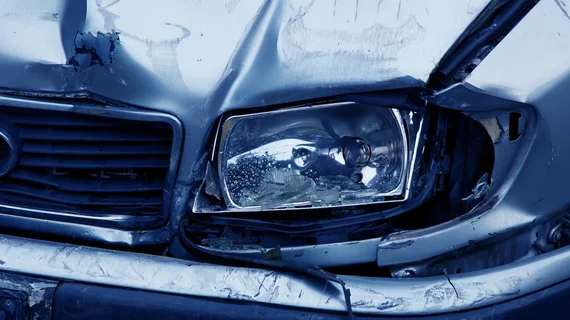Is CT overused on patients involved in car crashes?
CT scans of the abdomen and pelvis are routinely performed to evaluate patients who have been in car accidents, but new data suggest that the exam may be overutilized in many of these cases.
Abdominal and pelvic CT offers a quick overview of the extent of patients’ injuries. Though the information derived from the scan is critical for some, most motor vehicle crash (MVC) victims do not have positive findings on imaging. Studies on CT findings in MVC patients have yielded mixed results, with some suggesting that patients with normal mental status and a negative physical exam do not need CT imaging, and others indicating that these individuals could have intra-abdominal injuries despite the absence of perceived red flags on physical examination. This makes the process of developing imaging criteria for MVC patients complex, as the added burden these exams place on both healthcare staff and patient resources also should be considered, experts involved in the new study explained.
“The liberal use of CT scanning is associated with increased cost and radiation exposure for patients, and, thus, determining which patients truly require CT and applying appropriate criteria in imaging is of great importance,” corresponding author Allen T. Yu, MD, PhD, with the Department of Surgery at the Icahn School of Medicine at Mount Sinai, and colleagues wrote in the journal Cureus on Nov. 10. “The literature is unclear as to what clinical factors put patients at high versus low risk for intra-abdominal injury.”
Current trauma imaging criteria are broad and could be leaving behind many patients who have positive findings. For this reason, researchers sought to determine whether certain patient and accident factors were associated with an increased risk of internal injuries.
To do this, experts retrospectively reviewed all trauma activations that occurred at their level 2 trauma center from January 2020 to January 2023. They compared CT findings to things like speed (over or under 25 mph) and presenting symptoms to see if there were any common variables that could signal a patient would be more likely to have positive findings.
Of nearly 4,500 trauma activations, just under 17% were due to motor vehicle accidents. Of those, 310 (42%) were considered low speed, 160 (21.7%) were high speed and 268 (36.3%) were of unknown speed. Out of all 738 MVC patients, just 29 had positive CT findings.
Patients involved in high-speed (over 25 mph) crashes were significantly more likely to have positive findings. The team determined that it would take 53 CT scans in the low-speed group to yield one positive case, compared to just 17 and 19 in the high-speed and unknown-speed groups.
Positive physical examinations of the abdomen and pelvis also were associated with positive CT findings, especially among the high-speed cohort, the group noted. This observation was consistent across the type of crash—motorcycle, scooter, car, bicycle—as well.
“While the number needed to scan is 53 patients for a positive CTAP finding, only 1 out of 310 low-speed MVC patients required intervention. Thus, 333 patients need to be scanned to find an intervenable injury,” the group explained. “However, the cost of missing this injury could be devastating, and clinical judgment must be exercised when choosing to forgo abdominal imaging.”
Though the study’s findings indicate that speed could be a factor to consider before MVC patients are sent for CT, they cautioned that more work is needed to better understand whether additional details (type of crash, extrication time, patient medication, etc.) affect CT findings before further recommendations can be made.
The study can be viewed here.

